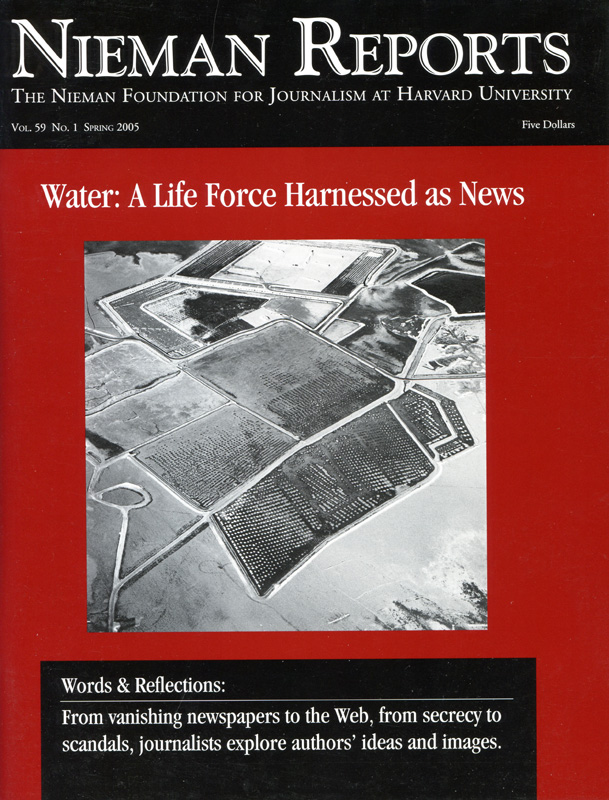The writer Wallace Stegner once called the arid American West our “geography of hope.” Its vast skies and towering mountains promise a future of limitless opportunity. But at what cost have we watered this living mythology? We have compelled what was a wild, red, living force—the Colorado River, which carved the majestic Grand Canyon—to nourish a vision of the urban landscapes of Europe and the East Coast on what the early 20th century writer Mary Austin called “the land of little rain.” It has created an apparition of sprawling cities, championship golf courses, and heavily subsidized “rain on demand” for cheap, abundant produce. The Colorado River supports more than 30 million people in the United States and millions more south of the border. Without it, civilization, as Westerners know it, would vanish.
El Delta del Rio Colorado, as Mexicans call it, once spread across two million fertile acres above the river’s mouth at the Gulf of California. Thick tule marshes rippled with schools of fish and migrating waterfowl ruled the sky above them. It is there that I’ve photographed the last of the Cucapá tribe, whose name means “people of the river.” For 1,000 years, they hunted, fished and farmed in this paradise, where only two inches of rain fall annually.
This tribe numbered as many as 20,000 when the Spanish arrived in 1539. With the construction of Hoover Dam near Las Vegas, Nevada in 1935, the world they’d known changed forever. The two-million-acre delta shrank by 90 percent, as the U.S. Bureau of Reclamation turned the river into a commodious, regulated plumbing system north of the border. Any water reentering the Colorado after being used for irrigation in the United States was laden with fertilizers, pesticides and salt leeched from soil once covered by an ancient sea.
Tamarisk, a salt-tolerant, invasive plant brought from Asia as a windbreak and bank stabilizer, swept down the river, each plant capable of producing up to half a million windblown seeds per year. Native cottonwood, willow and mesquite trees were crowded out by its thirsty root system, completely altering the riparian ecology. Fish and bird species vanished. Vast wetlands became empty, salt-encrusted baldios. Since Lake Powell filled behind the controversial Glen Canyon Dam in the 1960’s and ’70’s, the river sometimes no longer reaches the gulf.
Still, there is hope. I’ve photographed the miraculous Cienéga de Santa Clara, accidentally created in the Mexican delta in the 1970’s, with very saline U.S. irrigation runoff from the end of a discreet diversion canal passing through the border fence. Had it flowed into the Colorado, the water would have propelled the river past salinity limitations set by a U.S.-Mexican treaty. Even this poor water though, added to a once bone-dry former wetland, has produced the finest habitat for flora and fauna remaining on the entire river.
But in fall 2003, the U.S. Congress voted to allocate money toward the restart of a long-dormant desalting plant in Yuma, Arizona, mothballed since 1992 because of exorbitant operating costs. As originally intended, it would treat that same “wasted” irrigation runoff and release it into the main channel of the Colorado. Should the restart occur, the only water flowing down the canal into the delta would be the brackish waste from the desalination process, which would subsequently poison the Cienéga de Santa Clara out of existence.
Will underfunded forces along the desert border be able to head off disaster against the enormous U.S. pressure on the river?
Paralleling the rapid disappearance of the Colorado River Delta itself, “the people of the river” now number fewer than 300 in Mexico. Allowed only limited fishing rights along the muddy artery that had formed their culture, the Cucapás are no longer self-sustaining and languish in a desiccated community beside a two-lane highway speeding tourists to resorts farther down the Baja California peninsula. They often must fetch water from the polluted river by pickup truck. Like many others in the Mexican delta, they await a more equitable division of the Rio Colorado. No agua, no vida, they say. No water, no life.
John Trotter, a photographer who lives in Brooklyn, New York, has been working on a project along the lower Colorado River for almost four years. He began this project on March 24, 2001, the fourth anniversary of his near-fatal beating by a half-dozen street gang members while on assignment in Sacramento, California. In the spring of 2006 Trolley Books will publish a book of photographs he took at the brain injury treatment center where he lived while recuperating from his injuries. Fundraising to support his Colorado River project is assisted by the Blue Earth Alliance.


